KVH’s TracPhone V30 announcement includes more affordable mini-VSAT service plans
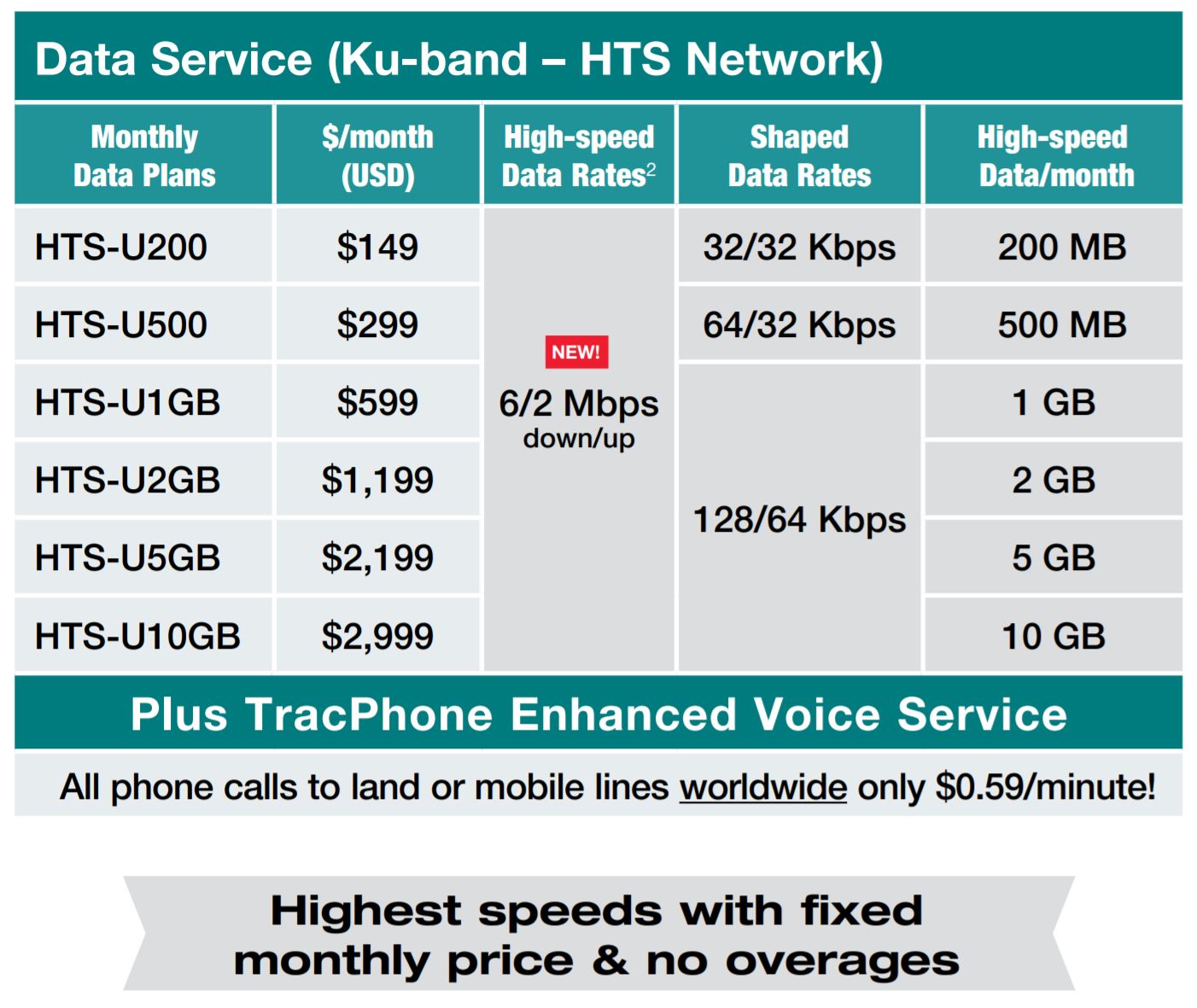
It’s certainly noteworthy that KVH now offers a smaller, simpler, and less expensive VSAT antenna, but the TracPhone V30 announcement also mentioned new service rates of potential interest to those cruising and working on slimmer budgets. Although the more affordable plans only include small amounts of high-speed data, they also offer unlimited low-speed data. Is it fast enough to make working by satellite a reality at a reasonable cost? Depending on how you use the KVH mini-VSAT broadband service, it just might work for you.
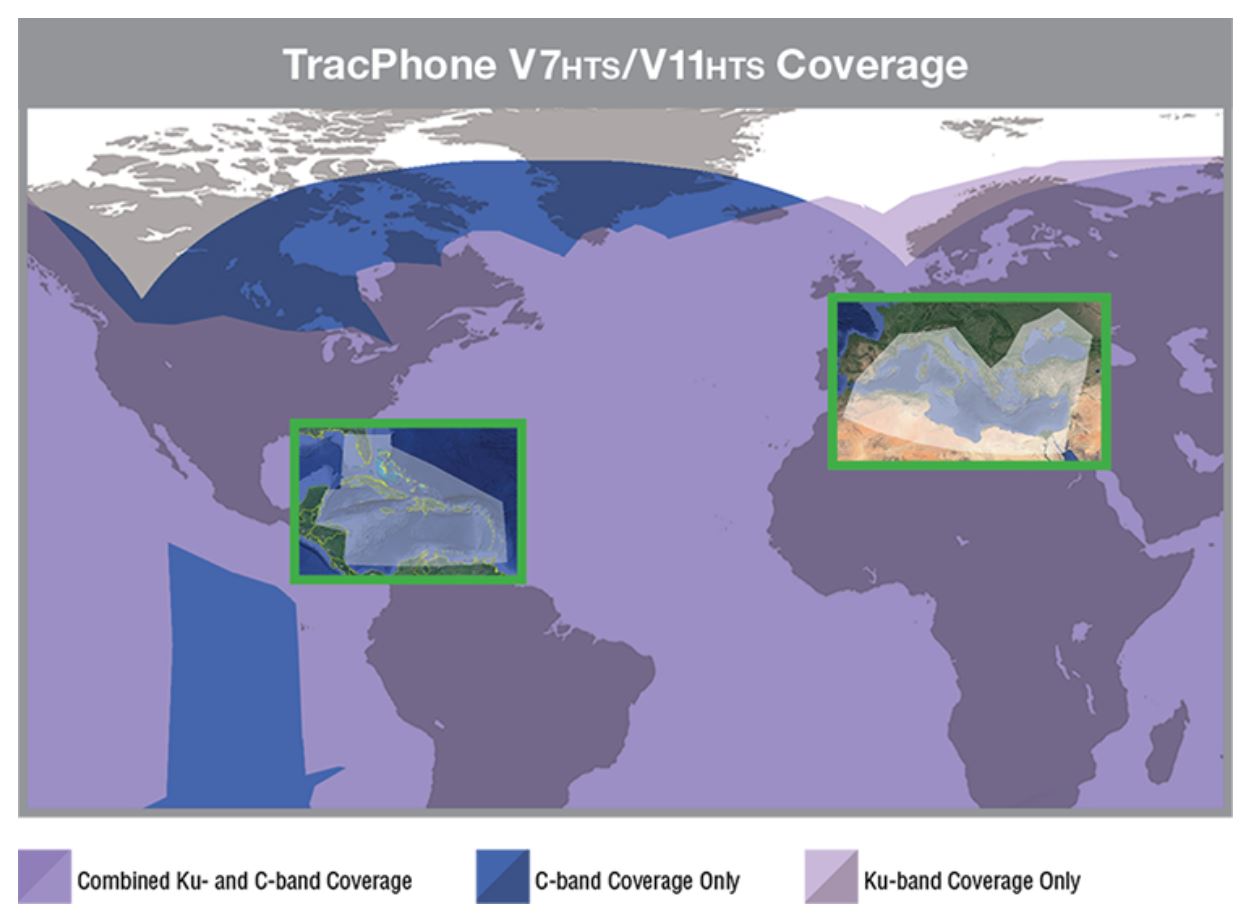
First, let’s acknowledge that high-speed satellite connectivity isn’t cheap, at least right now. The stabilized antennas and below-decks units start over $10,000 and can reach far beyond that. Monthly bandwidth costs can also add up very quickly. KVH is offers unlimited streaming in the Caribbean or Mediterranean at 10 or 20 megabits per second — depending on your dish size — for $3,000 per week or $10,000 per month. The dish needed to achieve 20 mbps lists for $50,000. KVH has seen strong demand for these options to the point there’s now a waiting list.
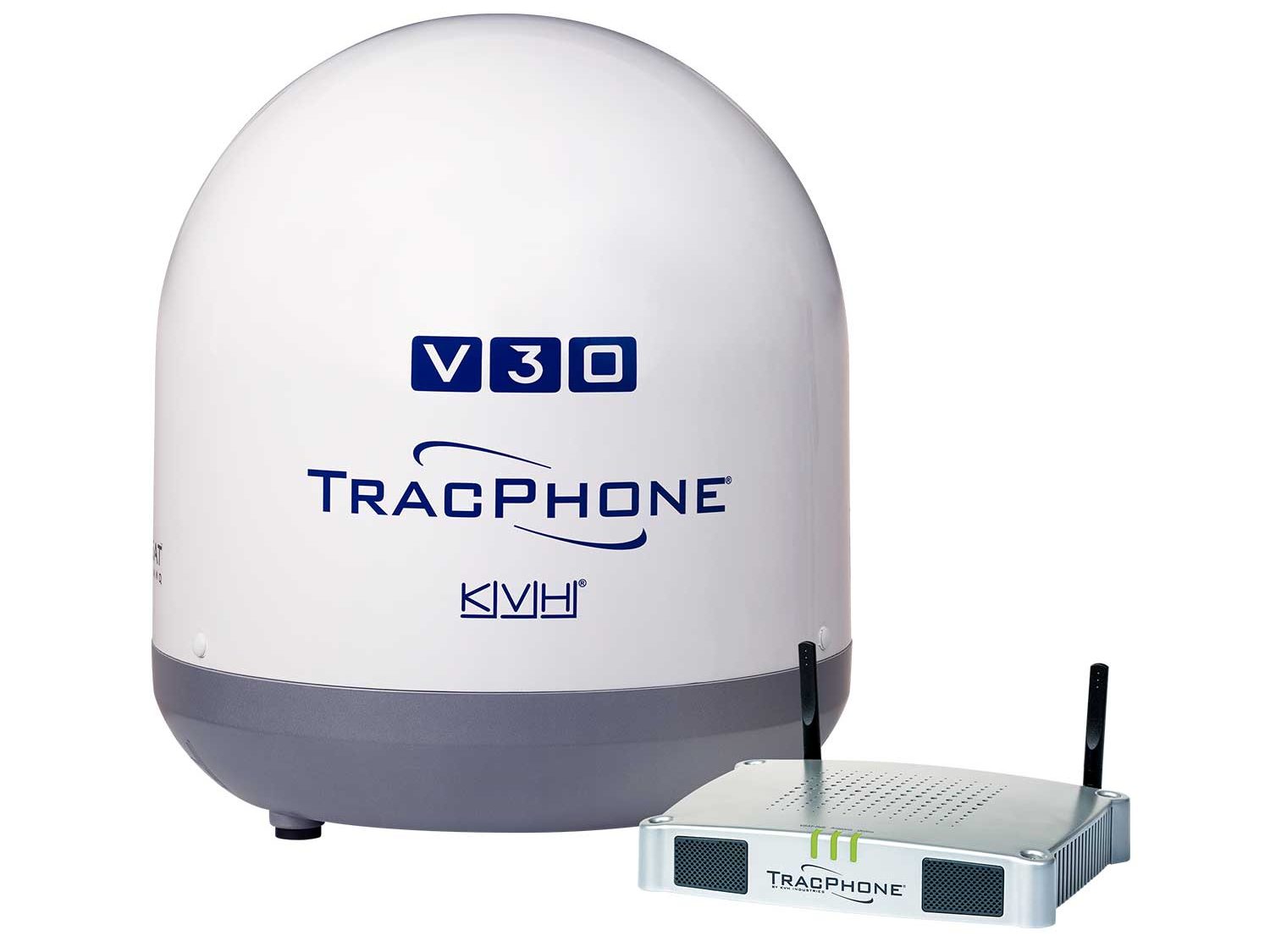
Getting back to more affordable options we have KVH’s new V30 antenna and rate plans. The V30 is a 15.5-inch diameter, 17.6-inch high dish and weighs 23.4-pounds. With a $12,000 list price, the V30 is a third cheaper than the $18,000 V3-HTS that offers the same performance, but additional network management capabilities for commercial use. I did mention this isn’t cheap, right?
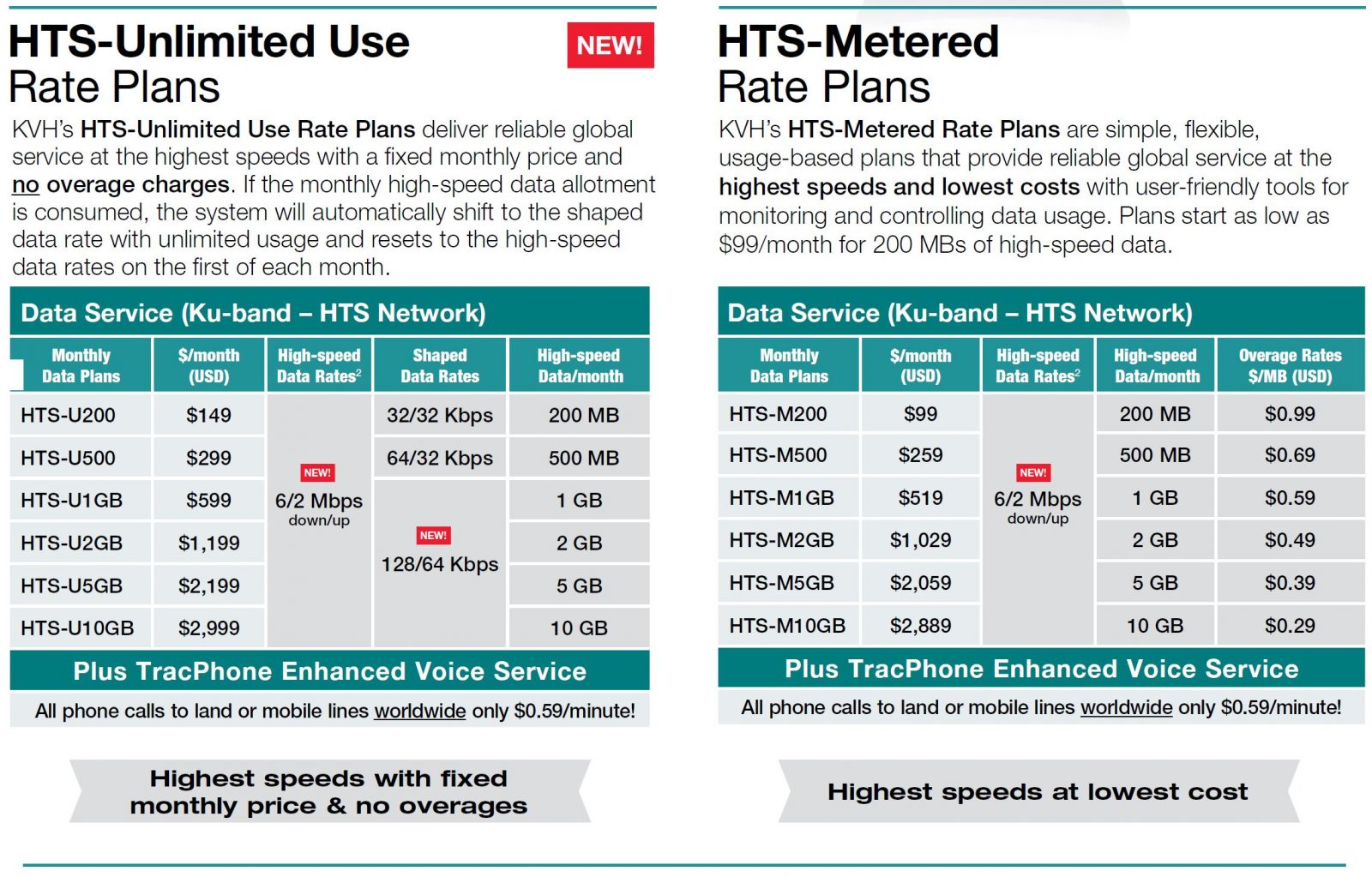
But once you’ve made the initial investment in hardware, the ongoing service can be fairly affordable. Depending on the work you’re doing, KVH mini-VSAT may work well for you, but you need to understand what you’re getting.
I think the Unlimited Use rate plans on the left are likely to be more interesting to cruisers, because theys come with the cost certainty of no overages and they allow you unlimited low-speed connectivity. But be warned, if you’re not careful you will eat up the high-speed allowance quickly.

Not all boaters will benefit from these rate plans and speeds. While someone working from their boat — dependent on being connected and reachable — may find this option very helpful, that’s only if the work isn’t bandwidth-intensive. If you’re on video calls all day long, these plans either won’t work for you or will quickly become costly. Conversely, if you do most of your work in a word processor, spreadsheet, or email, unlimited low-speed VSAT could work well for you. Understand, though, that once you’ve used up your high-speed allotment, things will happen much slower than on a 4G cellular or land-based internet link.
For the Gmail basic view shown above, I used Chrome developer tools to simulate the $299 per month 64/32 kbps down/up plan along with the 600-millisecond typical latency of VSAT. It loaded in about 11 seconds and individual emails took only a second or two to load. When I doubled the speed to the $599 plan the load time decreased to 6 seconds.
Is all this only temporary until low-earth-orbit options like Starlink’s $99 a month service become available? Possibly, but those options aren’t even widely available for fixed land use yet. We have learned that there will be mobile Starlink but hardware and service plans may come at a higher price.The Mobile Internet Resource Center and Steve Mitchell at Seabits have both done a nice job breaking down all the unknowns and generally bursting the bubbles of many who think Starlink will solve all their problems.
In summary, KVH’s new plans are the most affordable I’ve seen with a nearly global footprint and available now. They’re not for everyone and they can get pricey if you select larger data allowances. But, if your work does fit with what they offer they just might be worth another look.



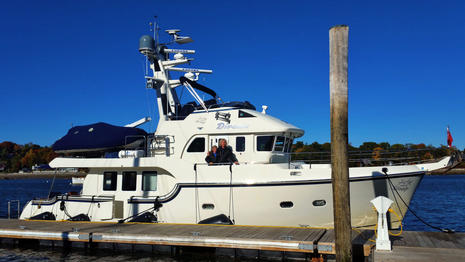

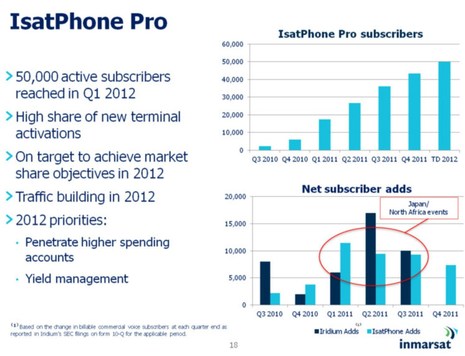







Affordable???It is only for the wealthy or people in high paid jobs working from their super yachts.For the average normal cruiser it is not an option
Terry,
I said more affordable, not affordable. Plus, I state several times throughout the article that satellite internet isn’t cheap. But, part of how any technology gets cheaper is by more people using it. Each little increment that the price comes down opens the market to more people. The more people who are using a technology, the easier it is to amortize the expenses of operating the network. In turn, that can help bring the price down even further.
So, even if this price adjustment doesn’t bring the satellite down to the reach of everyone, it may be an incremental step along the way.
-Ben S.
Funny, I’ve been recently enjoying SV Delos video posts from their anchorage in the Dry Tortugas and thinking they must be using their elaborate VSAT system to get the job done:
https://panbo.com/sv-delos-much-more-than-fun-in-the-pacific/
I also keep up with MV Dirona’s amazing cruising blog and am pretty sure that James is still working full time for Amazon Web Services largely thanks to KVH mini-VSAT:
https://panbo.com/mv-dirona-deep-cruising-deeply-shared/
I don’t think that either operation fits into “wealthy” or “super yacht” bags.
Delos does not pay for the service or the equipment, they are a test bed for viasat to test the fewsabilty of the sywtem on smaller cruising boats.
https://youtu.be/BmNTJrdLHMc
Sigh,
Lets just say less expensive. “Affordable” brings in all sorts of unknown and emotional variables. We also do not know the finances or arrangements of the examples cited as not being in the “wealthy or super yacht” category. Their examples obviously make sense for them and yet we do not know why.